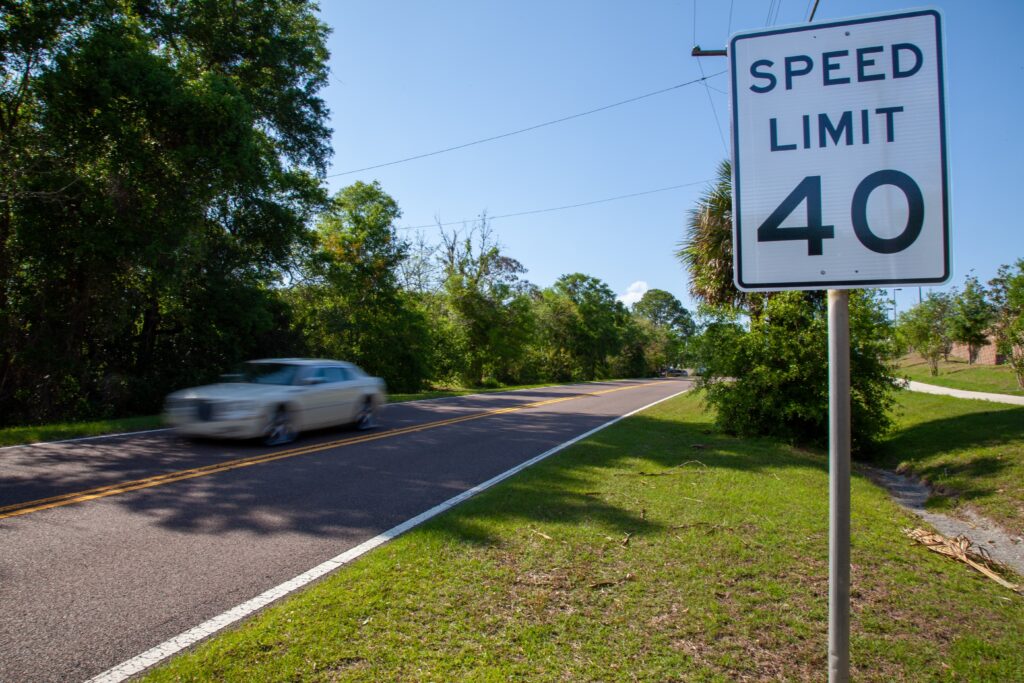
Five new California traffic bills await the signature of Gov. Gavin Newsom:
AB 43 – safety-based speed limits: This bill gives California cities more authority to set speed limits based on safety data.
Speed limits in California are currently set using the 85th percentile rule. The way this rule works is that traffic engineers survey roads around every decade and set the speed limit at the speed which 15 percent of drivers exceed, rounded to the nearest five. So, if engineers find 15 percent of drivers are driving 52 miles per hour or faster on a given road, they set the speed limit to 50 mph.
AB 43 gives California cities the ability to set speed limits based on safety data rather than the speed that drivers are choosing to drive at. The bill:
- Lets cities set the speed limit at 5 mph below engineer recommendations on streets identified as high-injury streets, or on streets where pedestrians and bicyclists, as well as vulnerable groups such as seniors, children, the unhoused and the disabled, gather
- Lets cities set 20-25 mph standard speed limits in business districts
- Lets speed limits revert to previous, lower speeds on streets which lack safety upgrades recommended by previous traffic surveys
- Makes more streets eligible for school zone speed limits
- Lets law enforcement enforce speed limits with radar guns in business districts and senior zones without needing to do a traffic survey first
AB773 – permanent “slow streets”: Many streets, during the COVID-19 pandemic, have been converted into “slow streets,” or streets where motor vehicle traffic is limited to local residents, deliveries and emergency vehicles. These streets often use barricades to slow traffic and prevent through traffic. The slow streets were created in part to exploit lower levels of traffic during the pandemic to encourage people to use the streets to exercise and stay healthy by walking, jogging, bicycling, etc. Some saw the slow streets as a necessity in response to the closure of parks and trails due to the pandemic.
AB 773 makes it easier for cities to lower speed limits and permanently convert some streets into slow streets to give people a safe place to exercise.
AB 122 – letting cyclists yield at intersections: AB 122 would allow cyclists to treat stop signs as yield signs.
Allowing cyclists to slow at an intersection, wait for traffic to clear, then proceed without fully stopping allows cyclists to spend less time in an intersection, potentially improving cyclist safety. A recent study in Delaware found that allowing cyclists to yield at intersections rather than always come to a full stop decreased bicycle collisions at intersections by 23 percent.

AB 1238 – jaywalking reform: AB 1238 would remove fines for crossing a road outside of a crosswalk or against a traffic light when it is safe to do so. The bill would remove a financial burden on low-income Californians and prevent police from using jaywalking violations to racially profile and stop people of color.
The bill would still allow police to cite anyone who crosses a street when it is unsafe to do so.
AB 917 – automated enforcement of parking in bus lanes: AB 917 would let bus agencies to put automated cameras on the front of buses which would take pictures of the license plates of cars illegally parked in bus lanes or at bus stops. Vehicle owners who park illegally in bus lanes or in front of bus stops would receive a ticket in the mail for the violation.

